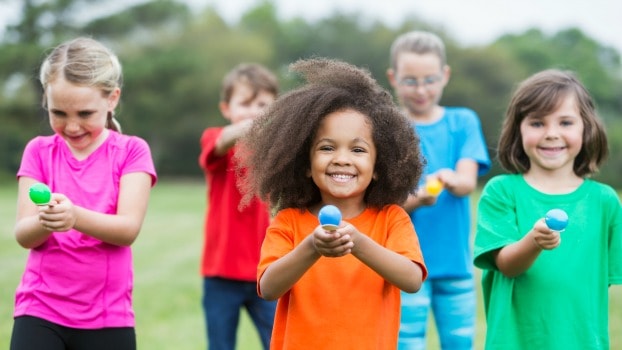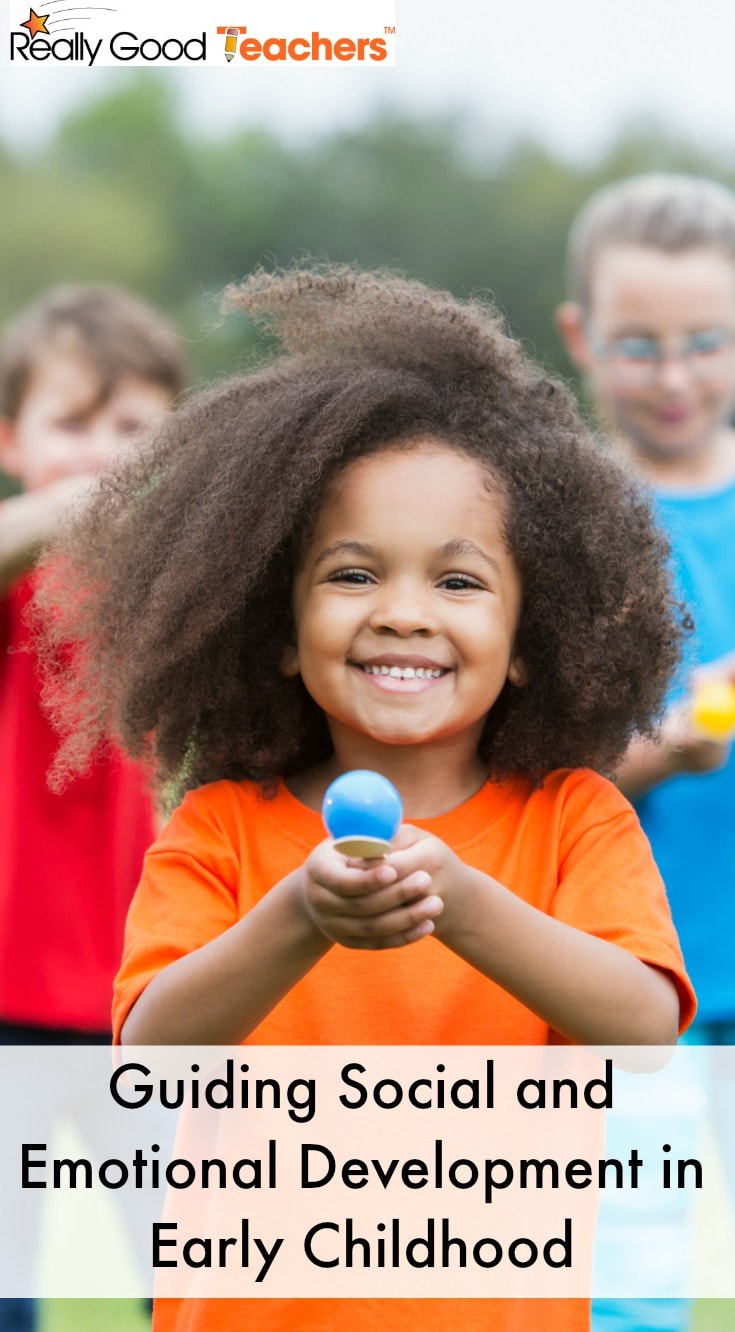
As an early childhood teacher, you help children develop not only physically and intellectually. You also guide their social and emotional development. Social and emotional development may not be as easy to plan for as literacy skills or gross motor development. But this type of learning can be vital to a child’s future success in school and in life.
Social and emotional development includes areas of growth related to feelings and relationships. As they mature, children begin to develop empathy, control their impulses, cooperate with others, and regulate their emotions. They learn how to relate to others—peers, older children, and adults. They begin to learn social cues and expectations for interacting with others. Their connections expand from their immediate family members to extended family, neighbors, community members, and more and more peers.
This area of development consists of five overlapping dimensions:
—Knowing myself – Children can understand their own emotions and feelings. They can begin to see how they react to different situations and how different emotions are connected to behavior.
—Controlling my impulses – Children can begin to exert control over their behaviors and reactions. They can manage emotions and delay gratification.
—Understanding others and society – Children can identify emotions in others and begin to express empathy and compassion. They can learn the norms and expectations of behavior in different situations.
—Developing relationships – Children can learn how to communicate effectively with peers and adults. They develop skills in cooperation and working with others. They learn how to resolve conflicts and solve problems within their families, classroom, and community.
—Becoming responsible – Children can evaluate the choices of a behavior and the consequences associated with those choices. They learn how to make responsible decisions. They grow in setting goals and accomplishing their plans.
Build an Environment to Nurture Social-Emotional Development
Acknowledge and name emotions.
Talk about basic emotions—anger, happiness, sadness, fear—then move into more complex emotions. Play emotion games, with pictures and words. Provide mirrors and ask children to make faces to show different emotions. Use emotion words to describe how you are feeling: “This piece of chalk broke when I was writing. I feel frustrated.” Encourage kids to name their feelings or identify feelings of a character in a book or story. Make talking about emotions a natural part of your classroom environment.
Create a “calm down spot” in your classroom.
In a quiet corner of the room, place a mat or a laundry basket. Place a few items that could help a child calm down—textured or other fidget items, such as a minky snake or a stress ball; a pillow or blanket; a mirror; calm bottle (plastic bottle of water with glitter) or a large hourglass; an emotions chart; appropriate books. Teach children that when they are feeling upset or angry, they can go to the calm down spot and sit for a few minutes to get themselves under control. (This is not a time-out space. Children choose when to go and when to leave this space.) Show how to move to this space and what to do while there.
Play active games with rules.
Rules help children understand what is expected in a game. They control their behavior to conform to the game. For example, play “Freeze.” Tell children to jump and move as music plays. Stop the music and children must freeze. Start the music for them to move again. This type of game leads children to begin to develop some impulse control.
Provide cooperative activities.
Large floor puzzles, parachute play, pretend play such as doctor or restaurant, and block building all provide opportunities for children to work together. They can negotiate and solve problems. They can begin to understand the thoughts and feelings of others.
Provide times for children to talk and listen.
Conversations during circle time help children understand the give-and-take of conversation and develop important social skills.
How do you support social and emotional development in your classroom?
